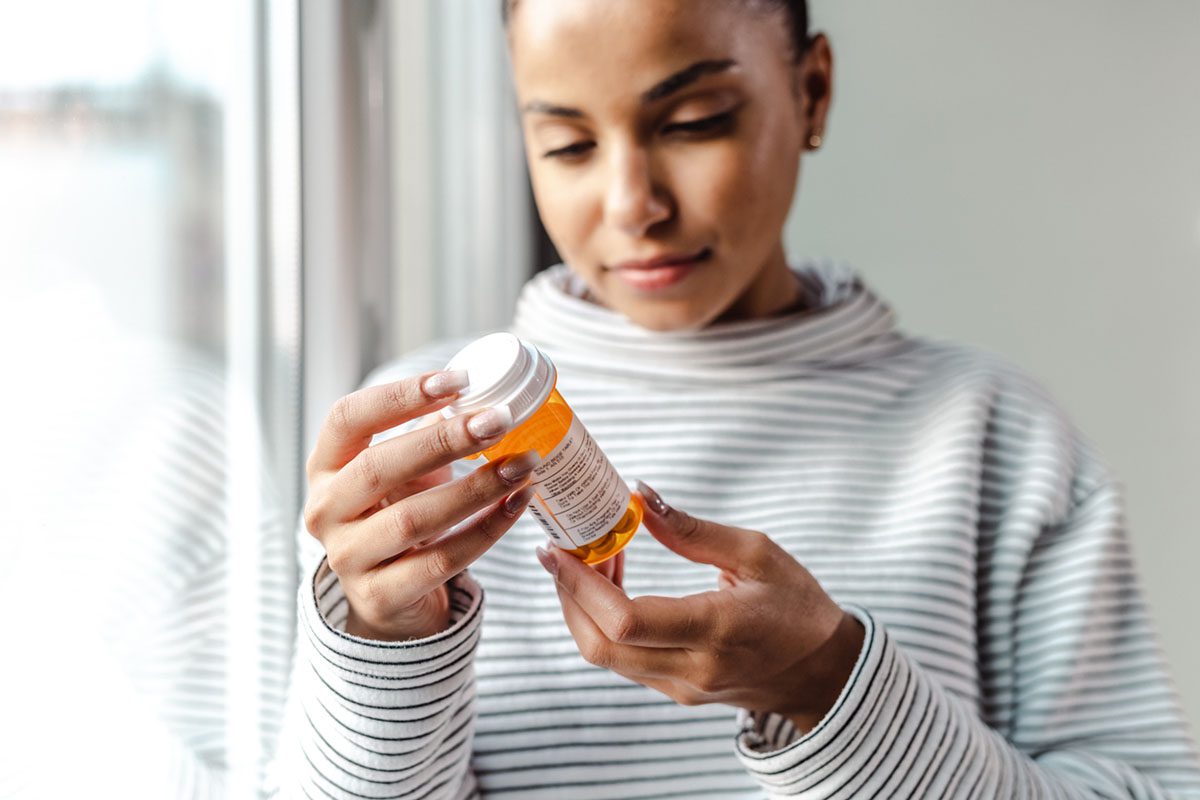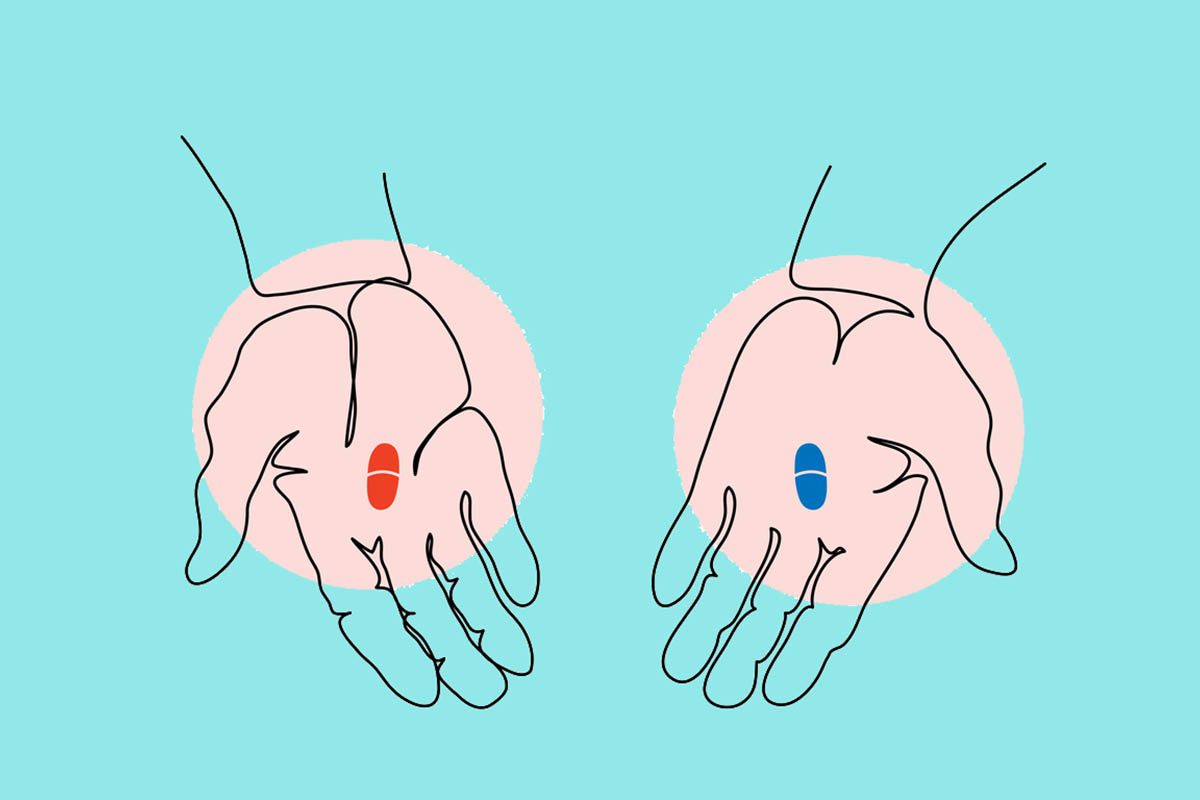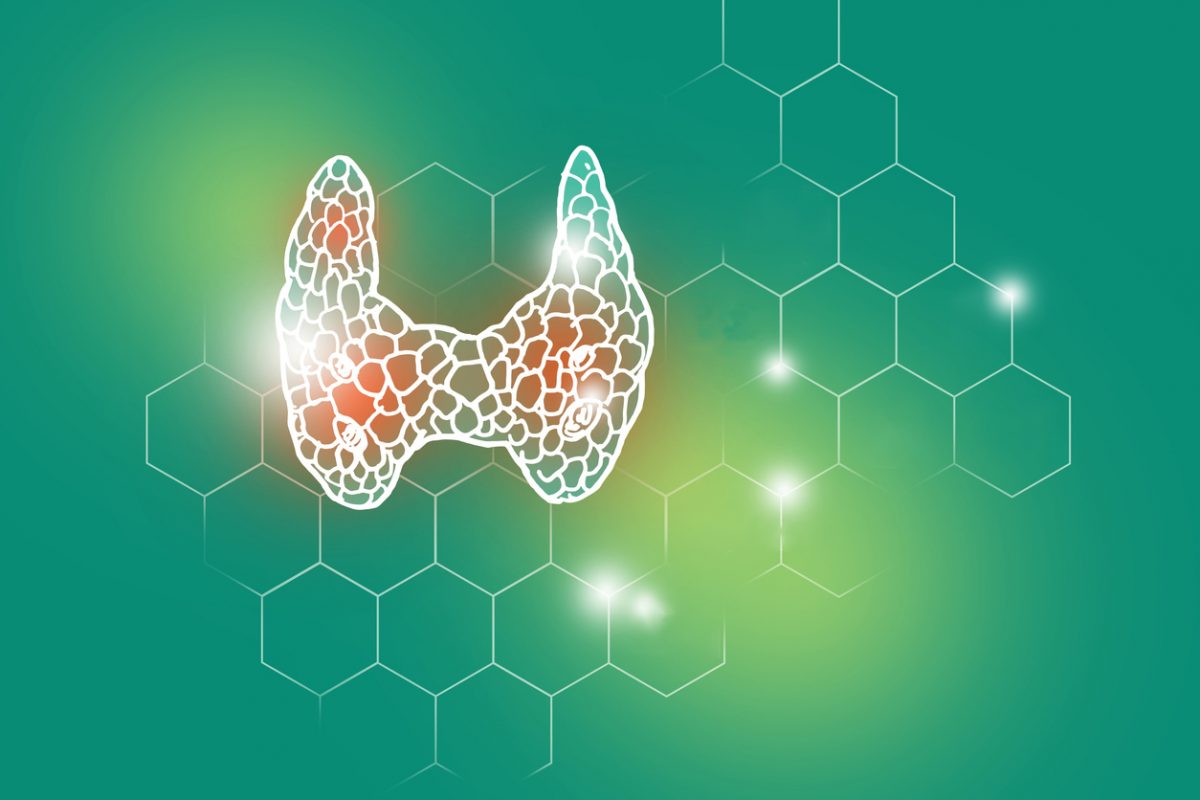
Pulsed Intravenous Administration of Scopolamine Produces Rapid Antidepressant Effects and Modest Side Effects
Scopolamine is an antimuscarinic agent and thus targets cholinergic muscarinic receptors. Currently, scopolamine is used primarily for postoperative nausea, gastrointestinal disorders, and motion sickness. Available formulations include intravenous (IV), oral, ophthalmologic, and transdermal. The involvement of the cholinergic neurotransmitter system in mood disorders is not new,1-4 but interest in this system as a potential target for antidepressant agents developed more recently.5,6 Scopolamine has been shown to produce rapid antidepressant effects (within 72 hours) in currently depressed unipolar and bipolar patients.6 These findings highlight the possibility that nontraditional neurobiological targets have the potential to produce rapid clinical improvement in patients suffering from depression and thus suggest novel directions for the development of therapeutics in the treatment of mood disorders. Contemplating more widespread use of antimuscarinic cholinergic drugs raises certain challenges, and whether these challenges are surmountable remains unclear.
In the 1970s, Janowsky and colleagues1,2 demonstrated that increasing cholinergic function in patients with mood disorders using the anticholinesterase physostigmine acutely worsened depressive symptoms in patients with major depressive disorder (MDD) and rapidly reversed manic symptoms and induced depressive symptoms in patients with bipolar disorder. These mood changes occurred rapidly, over the course of 30 minutes, demonstrating that mood could be altered quickly with pharmacologic agents in patients with affective disorders. Additional evidence identified the muscarinic cholinergic receptor system as being hypersensitive in mood disorders,7,8 pointing to agents that block muscarinic receptors as potential drugs of interest.
These findings led to a series of small studies that identified the potential of antimuscarinic agents, particularly scopolamine, to reduce depressive symptoms.9,10 Others attempted to understand the side effect profile of scopolamine, which is a nonselective muscarinic antagonist (subunits 1-4), through the study of more selective muscarinic agents. Studies with biperiden, which selectively blocks the muscarinic receptor 1 subtype,11,12 produced inconclusive results, largely due to methodological limitations that included open-label study designs and small sample sizes. The subsequent hiatus in cholinergic treatment research was most likely due to concern that anticholinergic drugs would produce side effects similar to those of the tricyclic antidepressants (eg, dry mouth, constipation, and blurred vision), a side effect profile that was not favorably received by patients or clinicians. As discussed below, the pulsed IV administration utilized with scopolamine may account for how well the side effects have been tolerated, as well as the rapid onset of antidepressant action.
Antidepressant Effects
Identification of scopolamine as an antidepressant agent occurred serendipitously. The hyperresponsive muscarinic cholinergic system, together with the role of acetylcholine in cognitive functioning,13 led to the hypothesis that cholinergic dysfunction contributed to the cognitive features observed in depression. Thus, scopolamine was administered to evaluate the cognitive impact of blocking muscarinic receptors. In fact, depressed patients showed rapid clinical improvement.6
In 2006, a double-blind, placebo-controlled, crossover clinical trial was conducted.6 Patients with MDD (n = 9) and bipolar disorder (n = 9) underwent a series of 15-minute IV infusions of placebo and scopolamine (4.0 µg/kg). After a single-blind lead-in placebo infusion, participants received either a series of 3 infusions of placebo followed by 3 infusions of scopolamine or the reverse sequence. Infusions were pulsed at 3 to 5 days apart. Participants were 18-55 years old, had been unmedicated for ≥ 3 weeks, had no substance dependence or substance abuse within 1 year, and had no major medical or neurologic disorders (for details, see Furey and Drevets6).
A robust antidepressant response to scopolamine was seen in this combined patient group with MDD and bipolar disorder.6 Patients receiving scopolamine showed a significant decrease in Montgomery-Asberg Depression Rating Scale (MADRS) scores 3-5 days following the first scopolamine infusion, whereas placebo patients showed no significant improvement. Specifically, mean baseline MADRS score across subjects was 32 (SD = 6.2), which decreased to 21 (SD = 7.6) following a single infusion of scopolamine, with 50% of patients experiencing remission by the end of the scopolamine infusion series. These findings have been replicated in an independent sample of patients with MDD (N = 22).5 Moreover, there is no evidence that these effects are associated with a “cholinergic high” as has been reported in the literature.5,6,14
Differences in the magnitude of clinical response to scopolamine have been considered on the basis of patient characteristics. No difference was observed on the basis of diagnostic subtype (ie, MDD and bipolar disorder)6 or the presence or absence of a comorbid anxiety disorder.5,6 Differences in response magnitude were observed for gender; while both men and women show significant improvement in their depressive symptoms, women show larger responses than men.14
Side Effect Profile
Observed and reported side effects after a pulsed administration of scopolamine (ie, twice per week) have been modest. Higher rates of drowsiness, dry mouth, light-headedness, and blurred vision were reported following scopolamine as compared to placebo administration. Nonetheless, these symptoms were transient (< 3 hours), no participant discontinued the study due to these effects, and these side effects appeared to be better tolerated than those associated with tricyclic antidepressants. No patient developed delirium, psychosis, hypomania, or disorientation. Although the Profile of Mood States confusion subscale score did increase acutely, it showed significant improvement at session end relative to peak effects.14 Cardiovascular effects included decreases in heart rate and in systolic and diastolic blood pressure following scopolamine that exceeded changes observed during placebo, but no patient required clinical intervention (for details, see references 5, 6, and 14).
Recent Related Studies
Oral scopolamine was recently shown to have antidepressant efficacy. In a placebo-controlled trial,15 scopolamine or placebo was administered orally as an augmentation therapy to citalopram in patients with moderate to severe depression. Patients receiving scopolamine showed higher response and remission rates than those receiving placebo. However, while oral scopolamine augmented the treatment response, speed of onset was not improved, and thus the oral administration of scopolamine may not provide the rapid effect observed following IV administration.
In another study,16 investigators added an anticholinesterase agent (donepezil) or placebo to successful ongoing antidepressant therapy to evaluate the potential to improve cognitive impairment in recently remitted patients with late-life depression. While donepezil reduced the rate of progression to dementia in a subset of patients with mild cognitive impairment, of interest to our discussion is that those receiving donepezil were more likely to experience a relapse of their depressive illness. Thus, the increase in cholinergic activity associated with an anticholinesterase was related to an increased risk of depression relapse.
Possible Mechanism of Action
The identification of scopolamine’s antidepressant effects is consistent with the hypersensitivity of the cholinergic system in mood disorders, and thus direct effects on the cholinergic system via muscarinic antagonism may underlie the observed effects. The prevalence of studies implicating cholinergic abnormalities in affective disorders highlights this possibility.1-4 However, the delay in the clinical response (> 3 hours) and the persistence of the antidepressant effect beyond the plasma half-life of scopolamine would argue that the mechanism of action extends beyond the direct effects of scopolamine on muscarinic receptors; thus, the antidepressant effect may result from interactions between muscarinic receptors and N-methyl-d-aspartate receptor (NMDAR) function. Stimulation of muscarinic receptors increases NMDAR gene expression,17 and therefore the increased muscarinic activity observed in mood disorders3 may underlie increased NMDAR neurotransmission. Hence, blocking muscarinic receptors with scopolamine reduces mRNA concentrations for NMDAR,17,18 subsequently reducing NMDAR neurotransmission. As abnormal glutamate transmission is also implicated in the pathophysiology of depression, the reduction of NMDAR gene expression following scopolamine administration may contribute to the observed antidepressant action of this agent.
Evidence also points to a potential role of neural plasticity in the antidepressant effects of scopolamine and to the role of the mammalian target of rapamycin (mTOR) pathway.19 This target has also been implicated in the rapid antidepressant effects of ketamine.20
Safety Considerations
The side effect profile for scopolamine in the studies described here has been relatively benign; however, patients were carefully selected and monitored closely in a hospital setting. As the side effect potential for this agent includes confusion and delirium, safety remains a serious concern if scopolamine in any form is to merge into clinical practice. Moreover, the patient population included in these studies was otherwise primarily medically healthy, and thus a more medically vulnerable population may be at risk for a broader side effect profile. Finally, the total number of depressed patients studied remains quite low relative to a typical antidepressant.
The impact of long-term scopolamine use has not been addressed, although we may be informed by the side effect information associated with the chronic use of antimuscarinics in the treatment of irritable bowel syndrome. While the antidepressant effects persist a minimum of 2 weeks postinfusion, and thus a treatment regimen could be developed to accommodate this timescale, the possibility that tolerance will develop remains a critical question. While there is no indication in the literature that long-term scopolamine use has deleterious effects, such studies have not been conducted. The primary uses of scopolamine are not such that repeated administration would be expected, and thus this important question regarding the safety of long-term scopolamine use remains unclear.
Directions and Remaining Questions
Despite these concerns, there is potential for the development of scopolamine as an antidepressant agent. Pulsed IV therapy is fairly well tolerated and efficacious. Other available routes of administration have not been thoroughly evaluated, and thus the potential for oral or transdermal scopolamine to similarly affect depressive symptoms requires evaluation. Anecdotal accounts of patients within the community utilizing scopolamine under a physician’s supervision imply that transdermal scopolamine and oral scopolamine may result in improvement in depressive symptoms for at least some patients. Nonetheless, a route of administration that will result in rapid absorption and thus more closely approximate the bioavailability associated with IV scopolamine may be more likely to produce similar antidepressant effects.
Future research would include the assessment of additional scopolamine infusions in those patients who did not achieve remission following 3 infusions, as well as the determination of the optimal dose and dose regimen of scopolamine. In addition, if scopolamine is to be useful clinically, it will be critical to develop a route of administration that allows for self-administration and results in similar antidepressant effects, as well as to characterize the tolerability and efficacy of long-term scopolamine administration. Last, a broader patient population will have to be studied to assess the generalizability of these findings.
While important questions remain, the evidence supports the clinical use of scopolamine to treat depression. The adaptation of an oral augmentation strategy could readily be applied clinically, and identification of patient subgroups that preferentially respond to scopolamine would be beneficial. The efficacy of scopolamine in bipolar depression deserves particular attention, as this patient group does not respond well to conventional therapies. These findings could lead to development of more targeted muscarinic cholinergic agents, selectively targeting specific muscarinic subtypes, that could potentially provide the antidepressant efficacy observed with scopolamine with a more favorable side effect profile.
Author affiliations: Experimental Therapeutics & Pathophysiology Branch, National Institute of Mental Health, National Institutes of Health, Bethesda, Maryland.
Potential conflicts of interest: Dr Furey is listed as a coinventor on a patent application for the use of scopolamine to treat depression. Dr Furey has assigned all rights to the US Government but will benefit financially from any royalties received by the US Government. Dr Zarate is listed as a coinventor on a patent application for the use of ketamine and its metabolites in major depression. Dr Zarate has assigned his rights in the patent to the US Government but will share a percentage of any royalties that may be received by the US Government.
Funding/support: None reported.
Corresponding author: Maura L. Furey, PhD, 15K North Dr, Bldg 15K, Rm 201, Bethesda, MD 20892 (e-mail: mfurey@mail.nih.gov).
REFERENCES
1. Janowsky DS, et al. Psychosom Med. 1974;36(3):248-257. PubMed
2. Janowsky DS, et al. Lancet. 1972;1(7762):1236-1237. PubMed doi:10.1016/S0140-6736(72)90956-7
3. Janowsky DS, et al. Am J Med Genet. 1994;54(4):335-344. PubMed doi:10.1002/ajmg.1320540412
4. Janowsky DS, et al. Lancet. 1972;2(7778):632-635. PubMed doi:10.1016/S0140-6736(72)93021-8
5. Drevets WC, et al. Biol Psychiatry. 2010;67(5):432-438. PubMed doi:10.1016/j.biopsych.2009.11.021
6. Furey ML, Drevets WC. Antidepressant efficacy of the antimuscarinic drug scopolamine: a randomized, placebo-controlled clinical trial. Arch Gen Psychiatry. 2006;63(10):1121-1129. PubMed doi:10.1001/archpsyc.63.10.1121
7. Dilsaver SC. Biol Psychiatry. 1986;21(8-9):813-829. PubMed doi:10.1016/0006-3223(86)90246-5
8. Dilsaver SC. J Clin Psychopharmacol. 1986;6(2):65-74. PubMed doi:10.1097/00004714-198604000-00002
9. Gillin JC, et al. Biol Psychiatry. 1991;30(2):157-169. PubMed doi:10.1016/0006-3223(91)90170-Q
10. Newhouse PA, et al. Arch Gen Psychiatry. 1988;45(10):906-912. PubMed doi:10.1001/archpsyc.1988.01800340028004
11. Gillin JC, et al. Psychiatry Res. 1995;58(2):99-105. PubMed doi:10.1016/0165-1781(95)02700-7
12. Kasper S, et al. Pharmacopsychiatria. 1981;14(6):195-198. PubMed doi:10.1055/s-2007-1019597
13. Furey ML. Curr Opin Neurol. 2011;24(4):364-370. PubMed doi:10.1097/WCO.0b013e328348bda5
14. Furey ML, et al. Neuropsychopharmacology. 2010;35(12):2479-2488. PubMed doi:10.1038/npp.2010.131
15. Khajavi D, et al. J Clin Psychiatry. 2012;73(11):1428-1433. PubMed doi:10.4088/JCP.12m07706
16. Katona C. Nat Rev Neurol. 2009;5(11):585-586. PubMed doi:10.1038/nrneurol.2009.164
17. Liu HF, et al. Sheng Li Xue Bao. 2004;56(1):95-100. PubMed
18. Rami A, et al. J Chem Neuroanat. 1997;13(3):201-208. PubMed doi:10.1016/S0891-0618(97)00044-6
19. Li N, et al. Rapid antidepressant actions of scopolamine require mTOR signaling and synaptogenesis. Paper presented at: Society for Neuroscience; November 16, 2011; Washington, DC. Program No. 903.15.
20. Dwyer JM, et al. Int J Neuropsychopharmacol. 2012;15(4):429-434. PubMed doi:10.1017/S1461145711001702
J Clin Psychiatry 2013;74(8):850-851 (doi:10.4088/JCP.13ac08584)
© Copyright 2013 Physicians Postgraduate Press, Inc.
ASCP Corner offerings are not peer reviewed by the Journal but are peer reviewed by the ASCP. The information contained herein represents the opinion of the author.
Visit the Society Web site at www.ascpp.org




